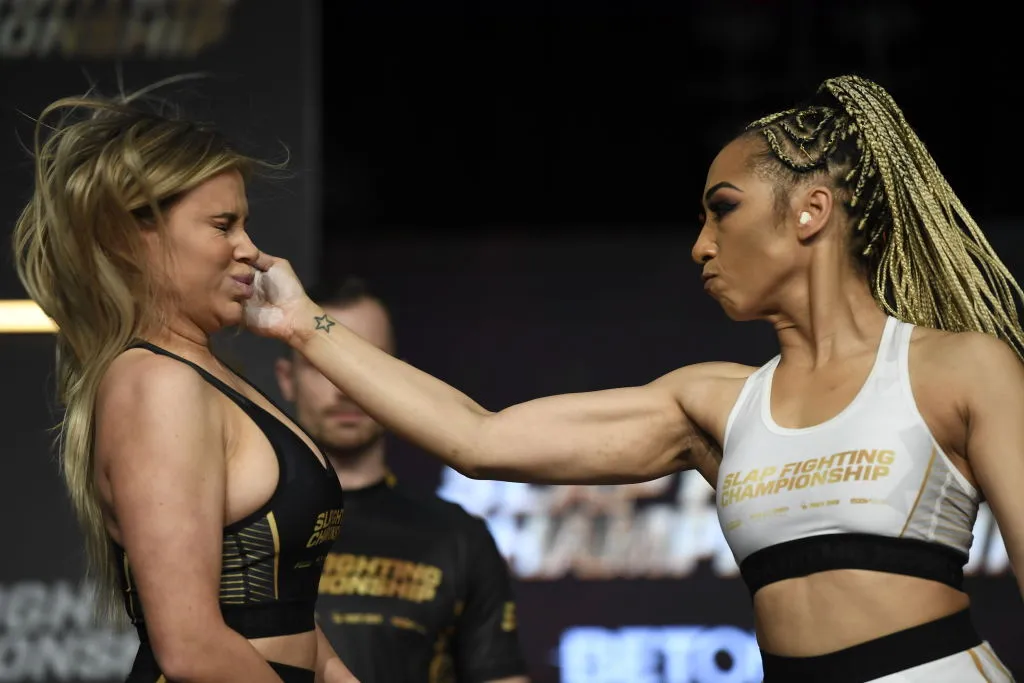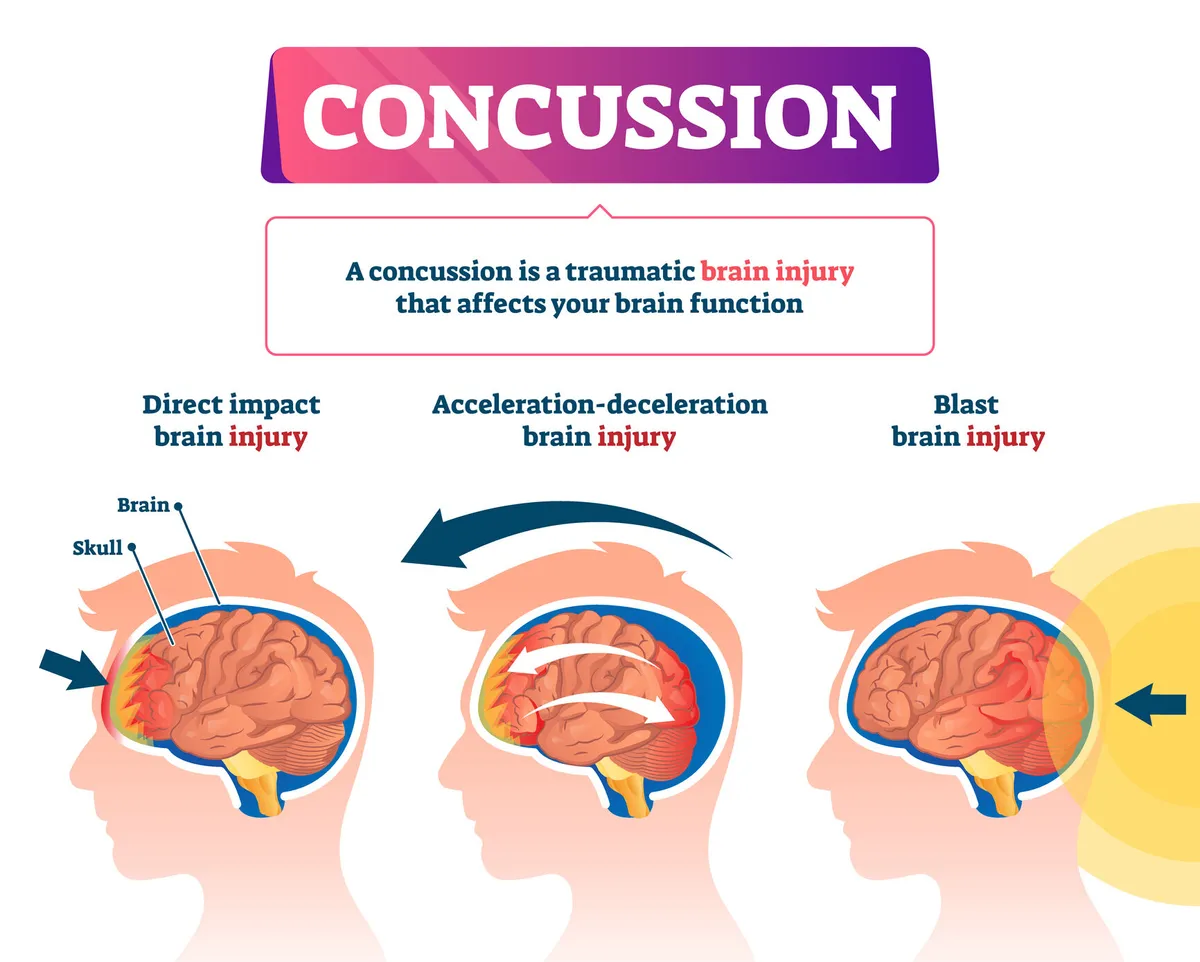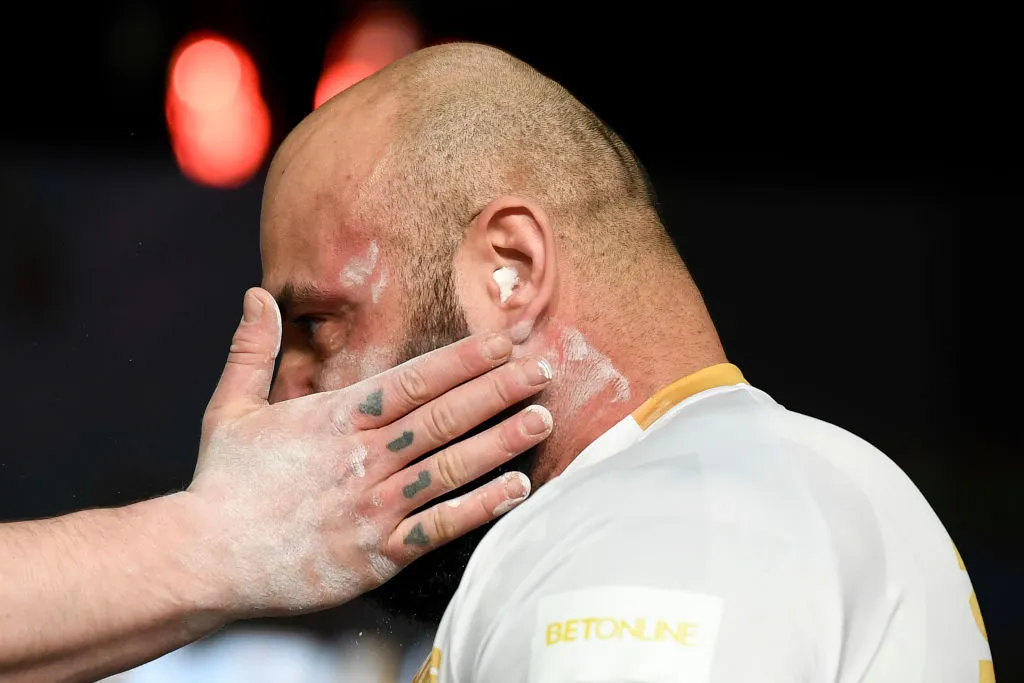There is absolutely no shortage of bizarre sports that ask you to put your body on the line for entertainment. But while the likes of cheese rolling, boxing-chess and the Running of the Bulls can see players facing serious injuries, it’s the Power Slap League that has really caught the public’s attention.
The sport really is as the name suggests – a competition of powerful slaps. Two players stand across from one another, taking it in turns to slap each other as hard as they physically can. And it's not the only league doing this, with the Slap Fighting Championship (see main picture) having an even longer history of making a sport out of slaps.
As the sport went viral and footage began to spread like wildfire, the safety of this contact sport was called into question. We spoke to two concussion specialists from Loughborough University to fully understand just how dangerous a sport like this actually is.
Listen up, here are the rules

To fully understand what is going on, it is important to understand the rules. And yes, there are rules… or at least some, according to founder Dana White (yes,thatDana White, UFC president).
To start a match, a coin toss decides who slaps first. Per fight, there is a maximum of three rounds and you can only slap with an open-hand. A player has 30 seconds to deliver their slap and their opponent has 30 seconds to recover.
Players stand across from each other, shoulders squared, chin up and arms behind their backs. Players who flinch will result in a foul, as will hitting with a clubbed hand or hitting in line with the eyes (don’t want someone getting injured do we!). Players win by a judge's decision after three rounds, or by knocking the other player out.
While both participants aren’t given headgear, they do have earplugs and mouth guards to avoid damage to the jaw or eardrums. As for damage to the head… well, that is the aim of the game!
Read more:
- If the brain has no pain receptors, why do I get headaches?
- How does concussion affect vision?
- Neuroplasticity: A neurologist explains how the brain recovers from injury
Concussions on top of concussions
While there are some rules, this is a sport about who can cause the largest amount of injury, fully focused on trauma to the face and head. With this in mind, there are obvious concerns around brain injury.
“The main risk is that these people are getting clear knockouts causing concussions and absolutely clear concussion symptoms,” says Dr Matthew Pain, reader in biomechanics at Loughborough University.
Warning: the below video contains violent content
“Those are not just happening once but instead it is happening repeatedly where people who are, by medical standards, clearly concussed and they're going back for a second impact.”
Concussions occur when you receive serious force to the head, whether through direct impact, acceleration (like whiplash) or a blast injury (a nearby explosion, for example).
When this happens, your brain can move either rapidly back and forth or bang against the side of your skull. This jerking movement can stretch or damage brain tissue, triggering a chain of harmful effects.
Unsurprisingly, not every concussion is equal. They can be graded mild through to severe. Unfortunately, the kind that are occurring in the slap sport would rank well into the severe category, especially when a player is knocked out.
In contact sports like rugby or football, a player might have the occasional head injury, playing on for the rest of the game without any other issue. In fact, rules in both football and rugby require a player to be checked out if there is a suspected clash of heads.
In this slapping league, players are repeatedly going straight back for another head impact, or even a third one. This is resulting in multiple concussive injuries in a short period of time.
“As long as you weren’t knocked out, you will be hit again at full power, no matter how injured you already are,” says Pain.
“If you win the fight, you’ll work your way up through the league, fighting again until you win the league or get knocked out. In most sports, if you get a concussion, no matter how innocuous, you will be taken out of the sport for weeks or months.”
On top of this, players don’t defend themselves. In fact, it is part of the rules. “In boxing, the referee will stop the fight if a contestant isn’t able to defend themselves,” says Dr Dominic Malcom, reader of sociology of sport at Loughborough University. “That’s completely taken out of the equation in this event which is an incredibly dangerous decision”.
In both boxing and UFC, it is far less likely to see a knockout. Players can win via submission, and fights will be stopped when a fighter is clearly no longer able to continue.
The long-term health problems of a slap league

Very few people will willingly stand undefended and be aggressively slapped by a big burly person, so there isn’t exactly a huge amount of research into the effects of this sport.
However, all of the signs point towards major health issues in both the short and long term for players, especially considering the pure number of concussive injuries that are occurring.
“People who work with concussions might see one or two a year that are as severe as this sport. Concussions are common, but to see someone knocked unconscious, giving reflex responses and spasms – these would be immediate hospitalisations normally,” says Pain.
But understanding the long-term health risks these players could face is a complicated picture. Anyone receiving frequent head injuries is putting themselves at risk, but to what level?
“As such a new event, there is no reliable evidence on long-term effects. However, American footballers have a high rate of chronic traumatic encephalopathy (CTE) – a brain condition linked to repeated head injuries,” says Malcom.
A CTE is a brain condition that slowly gets worse over time. It can lead to dementia and other long term problems and is caused by repeated head injuries.
“However, what we don’t know is how intensively you need to take part in the sport for this to occur. In the UK, rugby union and footballers show evidence of high rates of dementia in professional players compared to the public, but these are different impacts to the slapping.”
The big question in terms of the Power Slap events is how often players will compete. If they do just one event, their risk level is much lower. If they continue to do it on a long-term basis, they are putting themselves at risk of long-term migraines or traumatic brain damage.
Equally, it is likely the people competing have come from another form of martial art or contact sport. This could mean their time in the Power Slap competitions is building on existing head injuries.
While it is hard to predict the exact frequency and risk, even a single concussive injury can result in both short- and long-term problems. As the number of injuries increases, so does the risk.
“You can end up developing migraines that become a permanent fixture in your life, or you could easily end up with a long-term affliction. This doesn’t have to be from repeated injuries, even a single hit can do this,” says Pain.
Part of the issue is that, while symptoms can present days or months later, it can sometimes take years or decades for a concussive injury to show any major symptoms.
“There has been at least one instance where, after a competition, someone has died from being heavily concussed or knocked out. The question is whether it was from the injury, something that happened later, or a combination of factors.”

Even if it is a short-term or a relatively minor issue, the problem with concussive injuries and damage to the brain is that there is such limited treatment options or rehabilitation interventions at the moment.
Slapping over a new leaf
Like UFC or boxing before it, questions are arising around the safety of this sport and whether it needs to have a regulation overload.
However, Malcom argues that any regulation would contradict the nature of the sport. “It seems to me that the selling point is the lack of protection or preservation. To introduce new rules, it would lose its interest and the commercial value goes away,” says Malcom.
“I suppose you could improve the medical surveillance both before and after the event, but could you really change the rules without stopping the game? I don’t think so.”
Instead of addressing the injuries after they’ve happened, Pain believes part of the issue arises beforehand in people not fully understanding the risks.
“You can say they are adults and know the risks, but I don’t think they entirely do, no one really knows the risks that well,” says Pain.
“Knowing that they will stand there getting hit in the head repeatedly, it is very different to telling someone to stand there and have their arm hit with a cleaver until you say stop. You know you’ll lose an arm there; you don’t know that these slaps could cause permanent brain damage and the inability to walk or function.”
BBC Science Focus reached out to Power Slap for comment but have had no response.
About our experts, Dr Matthew Pain and Dominic Malcom
Pain and Malcom are lecturers at Lougbourgh University, situated in the school of sport, exercise and health sciences.
Pain specialises in biomechanics, understanding the bodies movements, while Malcom is focused on the sociology of sport.
Read more:
